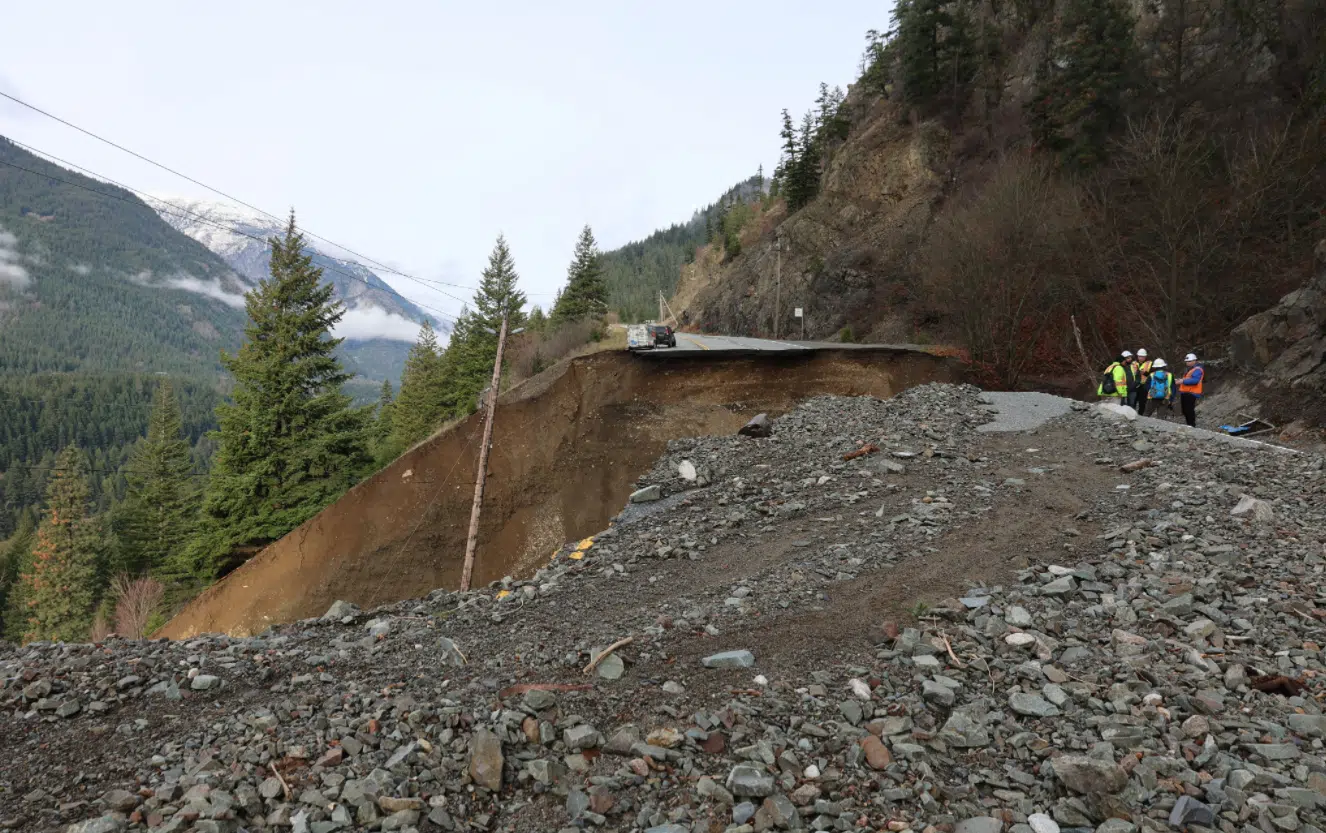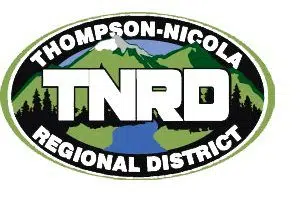
A major washout on the Trans-Canada Highway south of Jackass Mountain, between Lytton and Boston Bar. (Photo: Ministry of Transportation)
The BC Trucking Association says some long-haul truckers may be able to get an in-transit permit to take an alternate route through the United States.
President Dave Earle says that’s one of the items being discussed with federal officials. He explains an in-transit permit allows for trucks to be fueled and travel through the U.S. on direct trips, and trucks can be monitored while on foreign territory. He says this permit is a “two-way street” that exists for U.S. trucks that may need to detour for parts of Canada as well.
“It’s going to depend on what Highway 3 looks like, it’s going to depend on so many things over the coming days. But in an abundance of caution we reached out and began those conversations, to say hey, we really need to take a look at what this will look like. Even in a COVID world, to make sure that we can get those goods to where they need to be.”
Earle says the state of the Hope-Princeton Highway will factor in, but he says the most convenient route for truckers going to the coast may be to take the I-90 and the I-5 through Washington state.
He also says long-haul trucks can’t take Highway 99 west of Lillooet. And he says the Hope-Princeton Highway isn’t the preferred route, but better than no option to-and-from the coast. Both of those highways could reopen in the coming days.
The Trans-Canada Highway through the Fraser Canyon, as well as the Coquihalla Highway north of Hope, are expected to be closed for many weeks because of washouts. New photos are being shared each day of damage on those highways; a new photo from the Ministry of Transportation shows a severe washout near the Jackass Summit on Highway 1 between Lytton and Boston Bar.
Earle is also echoing a call that panic buying of goods is not necessary, after massive highway washouts. he says the goods may take a little longer to arrive or cost more, but says the long-term disruption will be minimal.
“We’re not going to be into a place where you’re not going to have what you need on a day-to-day basis. They might be a day or two late, maybe they won’t have the selection that you’re looking for. But when you look around and see there are well over 10,000 people evacuated who have nothing, take a step back and say whoa, let’s be smart about what we’re buying.”
Reports suggest supply at grocery stores has already increased in the Kamloops area, as trucking companies make new arrangements around highway closures now several days into the situation.















